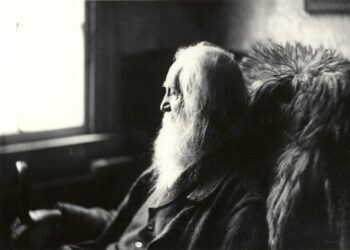Table of Contents
ToggleIntroduction
An Elegy On The Death Of A Mad Dog By Oliver Goldsmith Oliver Goldsmith (1730–1774) was an English writer, poet, and playwright whose work spans a range of genres, including novels, plays, and poetry. Though he is best known for works like The Vicar of Wakefield and the play She Stoops to Conquer, his poetry is also celebrated for its wit, simplicity, and satirical commentary on society. One of his lesser-known but highly charming poems is “An Elegy on the Death of a Mad Dog”.
This poem, published in 1775, presents an elegant, albeit humorous, exploration of themes such as morality, justice, and social conduct through the death of a mad dog. On the surface, the poem is a lighthearted and playful piece, modeled on the form of a traditional elegy, which typically mourns the death of a person or creature. However, Goldsmith’s use of the word “elegy” in this context is ironic, as the poem neither mourns the mad dog nor engages in serious, solemn reflection. Instead, the poem uses the death of the dog as a satirical vehicle to comment on human nature, social behavior, and moral righteousness.
In this analysis, we will offer a detailed summary of the poem, examine its core themes, and explore the poem’s tone, structure, and style. We will also provide a frequently asked questions (FAQ) section to help clarify important aspects of the poem, such as its literary techniques, the significance of the title, and its place within the broader context of Goldsmith’s work.
Summary of “An Elegy on the Death of a Mad Dog”
The poem begins with a straightforward account of a mad dog who has caused harm to the community, biting a series of individuals. The dog is described as having been vicious and dangerous, as it behaves erratically and attacks without provocation. However, despite the dog’s aggressive behavior and its eventual death, the tone of the poem is not one of sadness or deep mourning. Instead, the poem adopts a light-hearted, almost whimsical approach to the dog’s demise.
Read more
Goldsmith uses the dog’s death as an allegory to explore the moral lesson embedded within the story. After the mad dog bites several individuals, one of the key figures—a man—tries to intervene, only to be bitten himself. The poem then reflects on the consequences of such actions, with the death of the dog serving as both a literal and symbolic event.
However, there is a twist in the story: after the dog’s death, it is revealed that the man who had been bitten—despite his own suffering—is the one who ends up receiving the highest moral recognition. His conduct, in contrast to the mad dog’s erratic behavior, reveals the lesson that morality and good deeds are to be rewarded, even in the face of personal harm.
The poem ends on a note of social and moral reflection. Rather than being a conventional elegy, which would traditionally offer a mournful tribute to the deceased, Goldsmith’s poem uses the death of the mad dog as an opportunity for satire, pointing out the absurdities of both human behavior and societal expectations. The “elegy” becomes a vehicle for humor, irony, and subtle moral instruction.

Themes of “An Elegy on the Death of a Mad Dog”
- Morality and Social Justice: One of the primary themes in “An Elegy on the Death of a Mad Dog” is the exploration of morality and social justice. Goldsmith juxtaposes the chaotic and uncontrollable behavior of the mad dog with the moral righteousness of human beings. The dog’s madness is symbolic of irrationality, violence, and the breaking of social norms, while the human characters, especially the man who intervenes, are depicted as embodying the moral virtues of restraint, compassion, and justice.
- Irony and Satire: The poem is deeply ironic in its treatment of the mad dog’s death. Traditionally, an elegy is a sorrowful reflection on the loss of a life, typically focusing on the virtues of the deceased. However, Goldsmith’s “elegy” uses a mad dog—an entity typically deserving of scorn and punishment—as the subject of reflection. Rather than mourn the dog’s passing, the poem satirizes the exaggerated importance placed on certain events and the way human behaviors, such as virtue and vice, are often weighed in moral judgments.
Goldsmith also plays with the idea of the “tragic hero” by creating a ridiculous situation wherein the death of a dog becomes a reflection of human moral values, underscoring the absurdity of such pretensions when applied to real, everyday life.
- The Absurdity of Human Behavior: Another key theme in the poem is the absurdity of human behavior, which is highlighted through the contrast with the dog’s madness. While the dog’s actions are erratic and uncontrollable, the humans in the poem show a certain level of calculated behavior. Goldsmith exaggerates these social conventions to make the point that human efforts to uphold “righteousness” and “justice” can sometimes appear farcical, especially when they are applied to situations that may not merit them in the first place.
- The Role of the Outsider: The mad dog represents an outsider—a creature whose actions cannot be easily understood or explained within the societal norms of the community. His death, as the poem depicts, symbolizes the harsh consequences of not adhering to the rules and behavior of the civilized world. The human character, by contrast, is portrayed as one who adheres to those norms and receives societal approval for doing so. Through this dichotomy, Goldsmith explores the role of the outsider and the consequences of deviating from expected conduct.
Read more
- Human Responsibility and Sacrifice: The man who intervenes in the dog’s attack represents the theme of personal sacrifice for the greater good. Although the man gets bitten in the process, his action is noble, and it serves as a reminder of the moral responsibility that people have toward others, even at great personal risk. In this sense, the poem can be interpreted as an exploration of the ethical duty individuals have to contribute to the well-being of their communities.
Form and Structure of “An Elegy on the Death of a Mad Dog”:
An Elegy on the Death of a Mad Dog adopts the form of a traditional elegy, a poetic genre typically used to lament the death of a person. However, Goldsmith employs this form with a distinctively ironic twist, turning it from a mournful tribute into a humorous and satirical commentary on society. The poem consists of eight stanzas, each containing four lines written in rhymed couplets, adhering to a simple and straightforward AABB rhyme scheme.
This simple, almost nursery-rhyme-like structure is effective in enhancing the poem’s playful tone. The regularity of the rhyme scheme mirrors the predictable nature of a traditional elegy, but the poem’s content disrupts the expected solemnity, introducing wit and irony in place of grief. The simplicity and clarity of the poem’s language allow its satirical elements to stand out, making it accessible while simultaneously challenging the conventions of both the elegy form and moral discourse.

Conclusion
An Elegy on the Death of a Mad Dog is a masterfully ironic and satirical poem by Oliver Goldsmith that critiques the way society views morality, justice, and behavior. Through the mad dog’s death, Goldsmith creates a witty exploration of human conduct, using the familiar form of an elegy to subvert expectations and deliver a playful commentary on the absurdity of human actions. By contrasting the dog’s chaotic behavior with the nobility of the human characters, Goldsmith reflects on the virtues of selflessness and the complexities of moral judgment. The poem remains a humorous and insightful critique of social conventions, reminding readers that, sometimes, the lines between justice, morality, and absurdity are more fluid than we might expect.
Read more
1. Why does Goldsmith use an “elegy” for a mad dog?
The use of the term “elegy” is ironic in Goldsmith’s poem. Traditionally, an elegy is a mournful poem written to honor the dead, but in this case, the mad dog’s death is hardly something to mourn. Instead, Goldsmith uses the elegy form to highlight the absurdity of human behavior in dealing with the dog’s death. This inversion of expectations adds a layer of humor and satire, reflecting on the way society deals with issues of morality, justice, and righteousness.
2. What is the significance of the mad dog in the poem?
The mad dog represents chaos, irrationality, and a violation of social norms. Its death serves as a metaphor for the punishment that follows when someone or something behaves recklessly or disruptively. Through the dog’s death, Goldsmith reflects on human morality, contrasting the dog’s wild behavior with the measured, righteous actions of the human characters in the poem. The dog’s madness is an extreme version of behaviors that, while uncommon, are part of the social fabric.
3. How does Goldsmith use irony in the poem?
Irony is central to the poem’s structure and meaning. The poem’s tone, which is playful and humorous, contrasts with the serious theme suggested by the term “elegy.” While an elegy traditionally mourns the loss of a life, Goldsmith’s poem does not mourn the dog’s death but instead uses the occasion to comment on human behavior. The man who gets bitten by the dog is depicted as virtuous for his intervention, even though he is merely reacting to an irrational situation. This sets up a comic irony about moral righteousness and social norms.
4. What moral lesson can be derived from the poem?
The poem underscores the idea that moral actions and virtuous conduct, even when undertaken at personal cost, will ultimately be recognized and rewarded. However, Goldsmith also critiques the way society often elevates certain actions to heroic proportions, even when the circumstances do not warrant such praise. The poem also reflects the idea that justice can sometimes appear absurd when applied to illogical or exaggerated situations.
5. Why does Goldsmith use a dog as the central figure?
The dog in this poem is not a mere animal but serves as a vehicle for exploring broader societal themes. By choosing a dog—a creature commonly associated with loyalty but in this case, madness—Goldsmith can reflect on the chaotic aspects of human behavior while making a humorous commentary on how society perceives and deals with irrationality and deviance. The dog, in its madness, becomes a symbol of the forces that disrupt order and challenge social norms.

















